
Context
FindFood app was built with the idea of helping users to book meal reservations at restaurants while having a tailored experience and community/reward sense to it.
The problem
The app's navigation structure consisted of 4 tabs that could be simplified into a smoother experience.
The information architecture and visual design could also be enhanced since interfaces with much information need organization and detailing.
It became clear that we needed to improve the design as a whole so that users had a fluid and satisfying experience, where in addition to getting what they wanted, which was finding a restaurant to eat, they could engage with friends and see the advantages of using the app.
Challenge
How may we revamp and improve the user experience while featuring a streamlined flow, personalized features, and effortless usability?
Process
In the initial phase, I analyzed the proto-personas' existing data, which helped identify various problems and opportunities. With a clear understanding of the client, business, and focus area, I began researching references and exploring products or services that offered similar solutions to our objectives, further revealing additional opportunities for me to explore.
Throughout the process, the goal was to develop an app that provided users with a sense of support and uniqueness, prioritizing active participation and engagement within the community, integrating delightful features, and ensuring a seamless interface.
- Goal - Develop an App that provides personalization and convenience, simplifying online restaurant booking.
- Target audience - People seeking to dine out and make reservations, particularly in bustling
cities like New York. -
Desired outcomes - To increase usage (existing and new users), create a tailored experience for everyone and decrease the no-shows.
Timeline
Principles
Set of 5 principles used to structure the project.
- Mobile - It’s location-based and optimized for use on the go
- Personalization - It’s about meeting your wants and needs when it comes to eating out / food experiences
- Ease - Ease the online process (scheduling place, date, time, and payment features)
- Active - Focus on engaging friendship circles based on transparency through quality reviews, whether about the place, service, or food
- Monetization - Deliver more leads to the restaurants and decrease the no-shows
Before
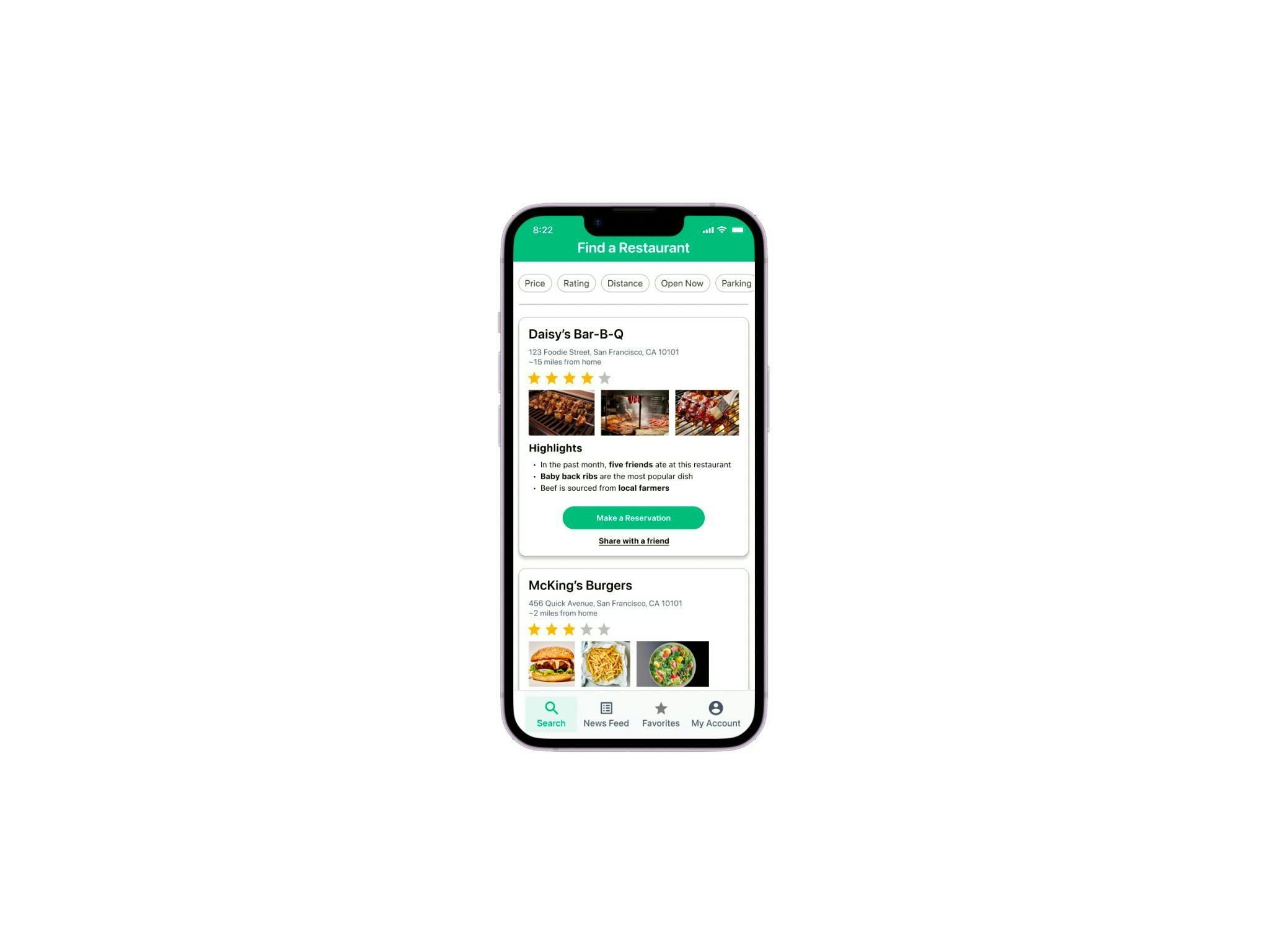
New Flow
The initial flow was broken and rearranged so users could navigate more easily.
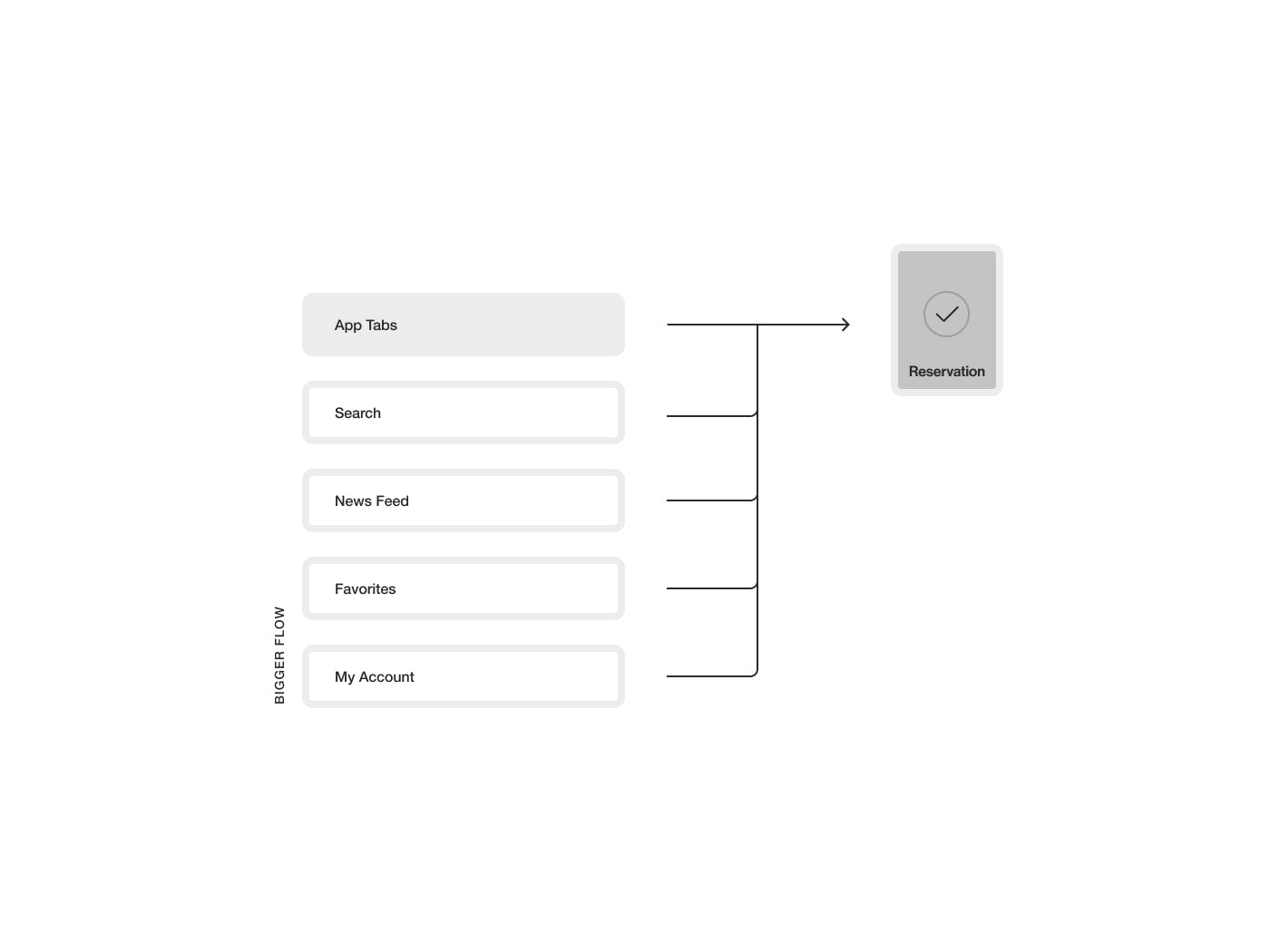
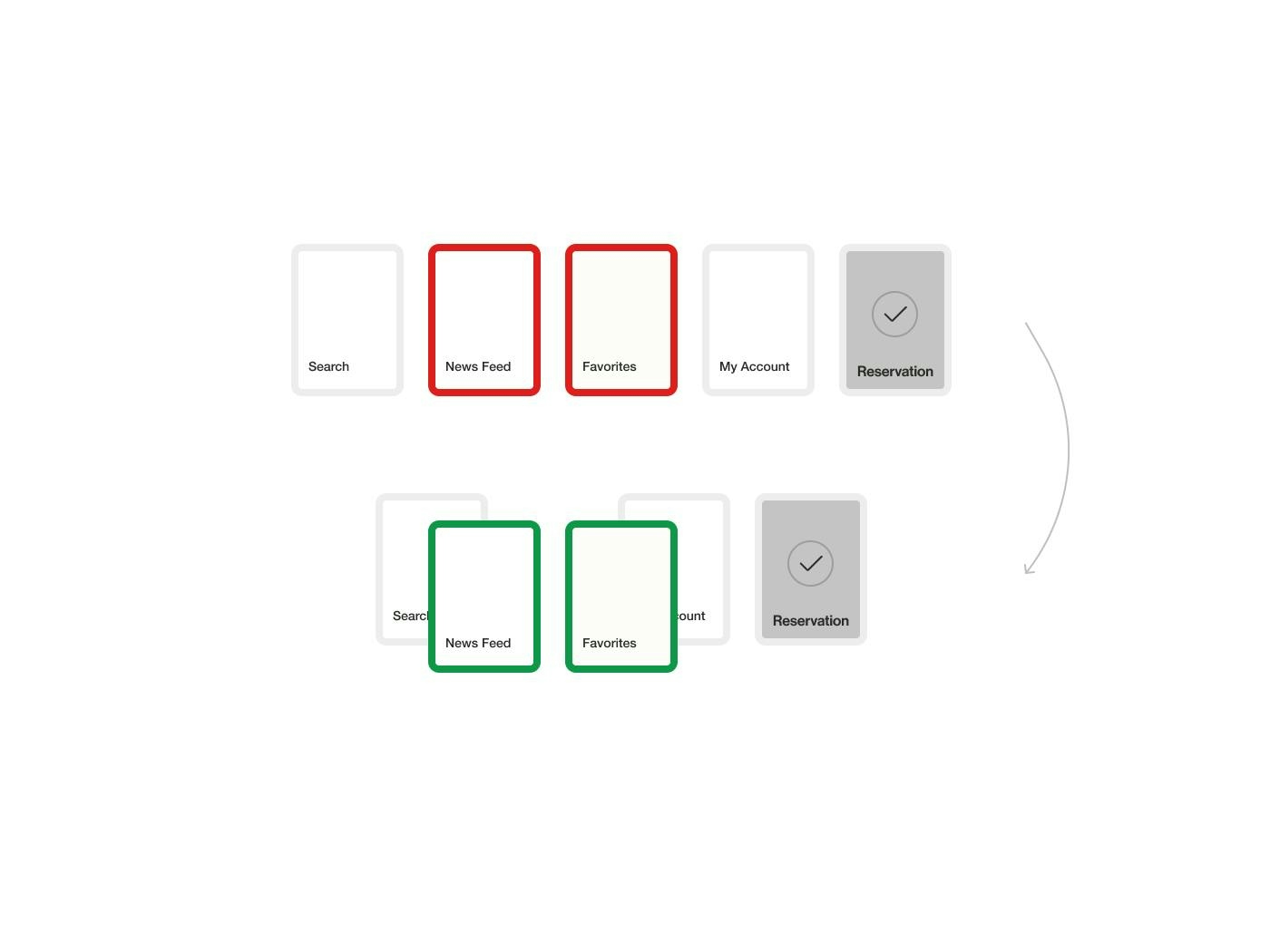
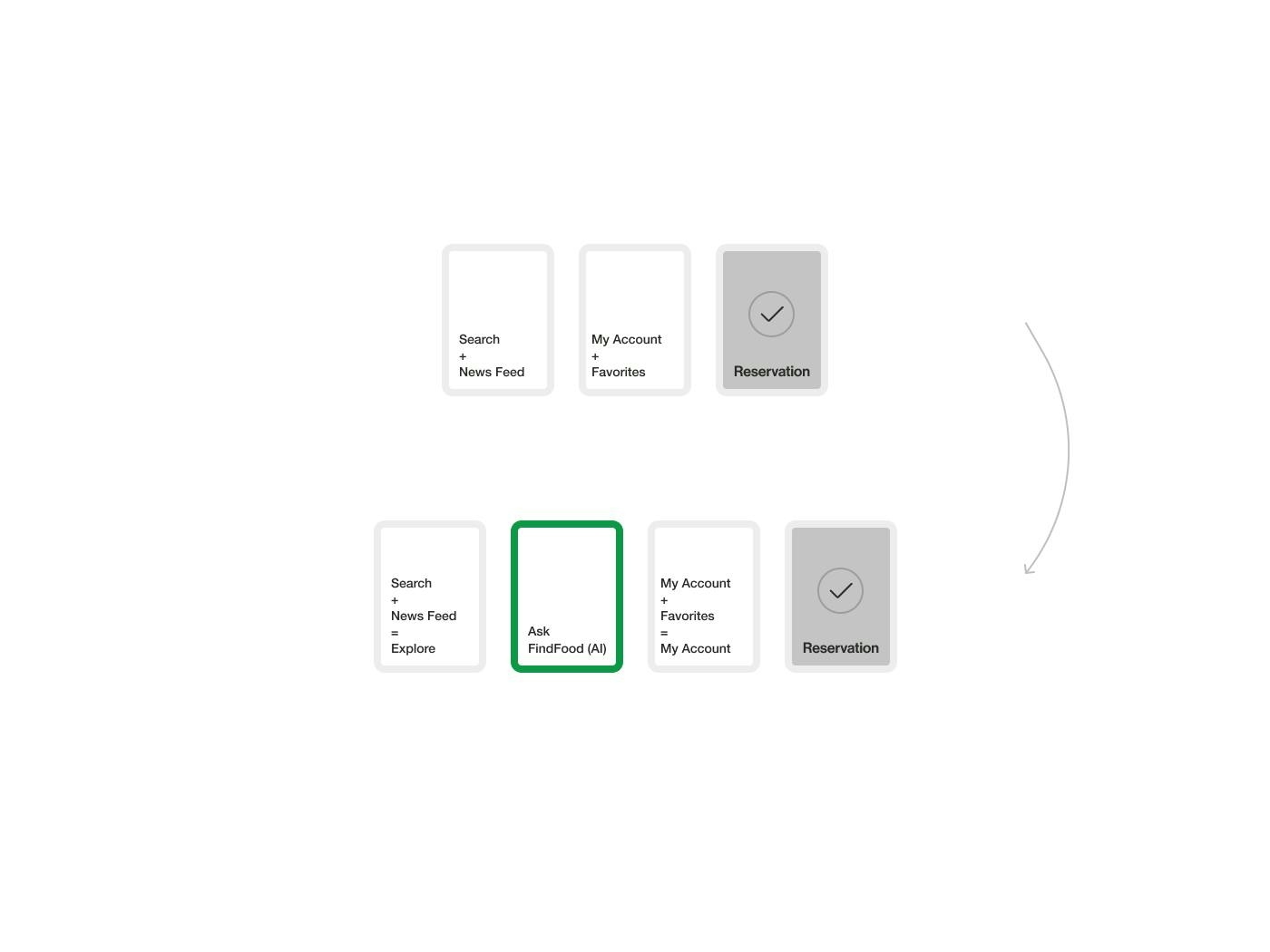
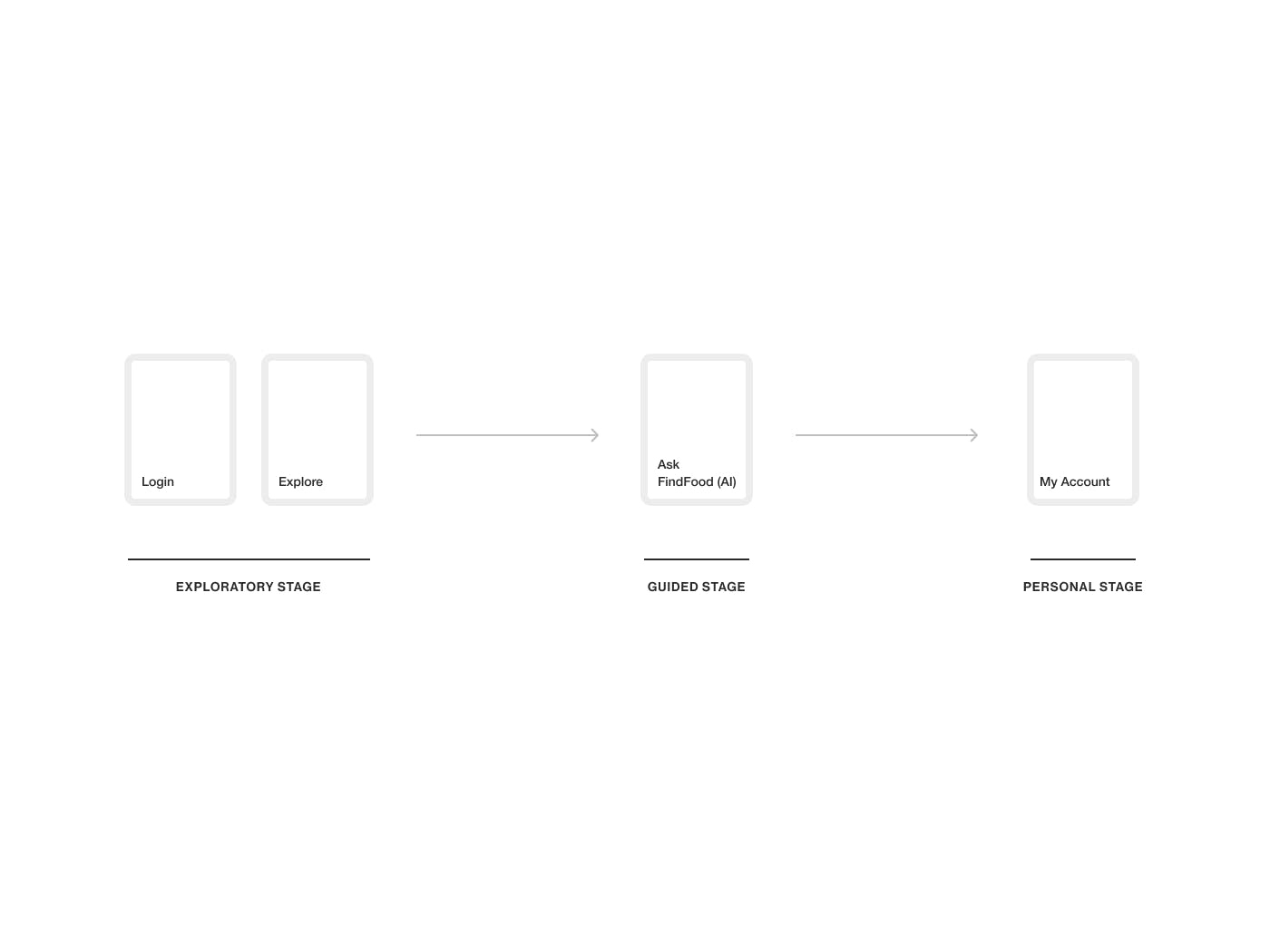
Opportunities
Based on the insights collected during the data analysis and research process (background data on existing users, user experience quotes, and market research), 3 core opportunities emerged:
01. Personalization
02. Restructure
03. Rewards
Personalization
Personalized Experience
By asking users about their interests upfront, we empower them to have a unique and personalized experience, demonstrating our commitment to providing relevant content and support throughout their interaction with the app.
Login
Incorporating content preference selection during the login process is an effective way to customize the entire user experience.
“I don’t use FindFood much at all – probably less than once a month – because I don’t have an easy way to figure out whether a restaurant can meet my dietary restrictions. Sometimes I’ll get lucky and the Highlights will mention it, but otherwise, there isn’t a good way for me to filter for what I need.”
Restructure
Interests
Users have the flexibility to search for the best spot using three different methods: manual search, leveraging App's recommendations, or utilizing AI assistance.
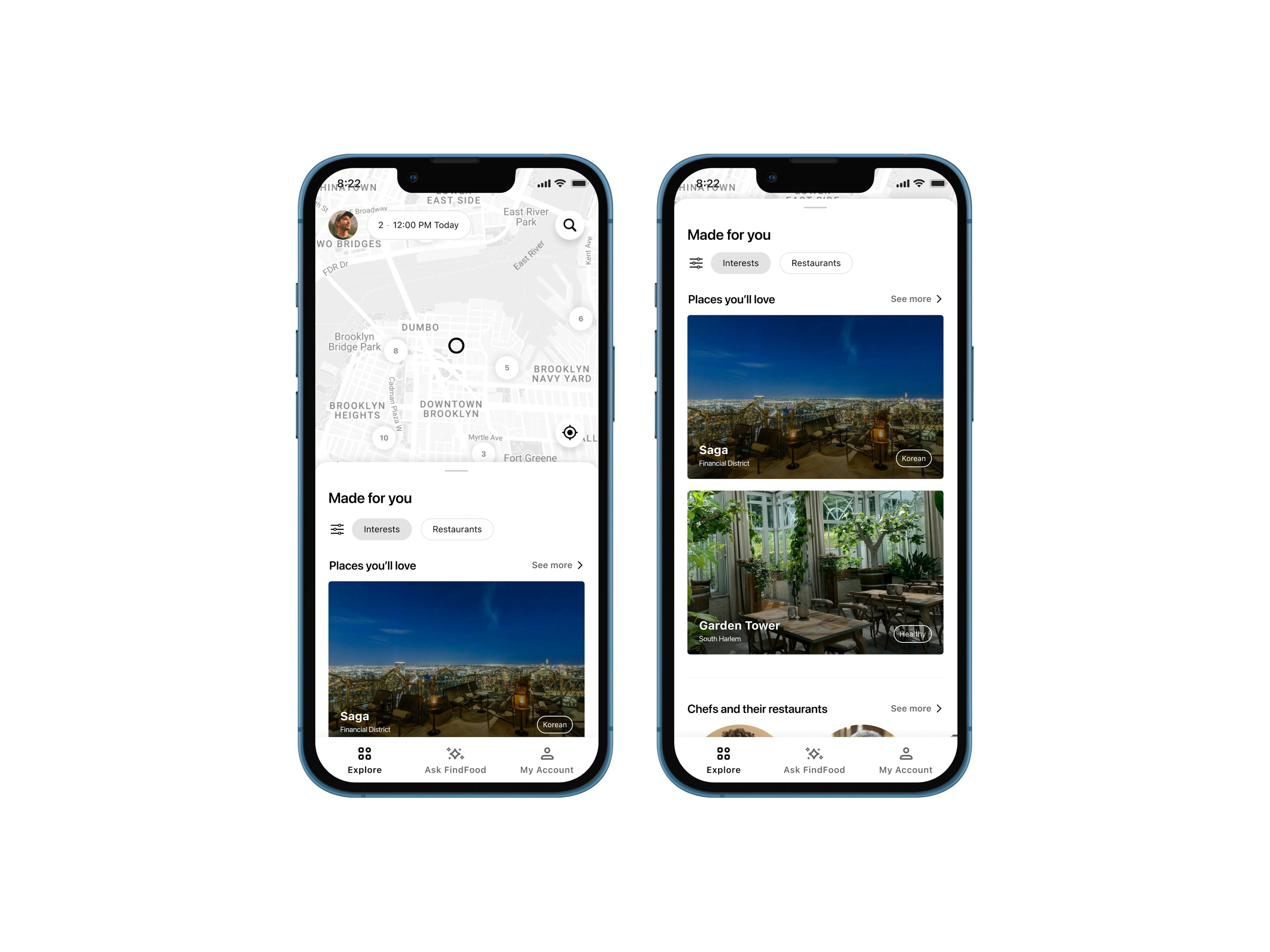
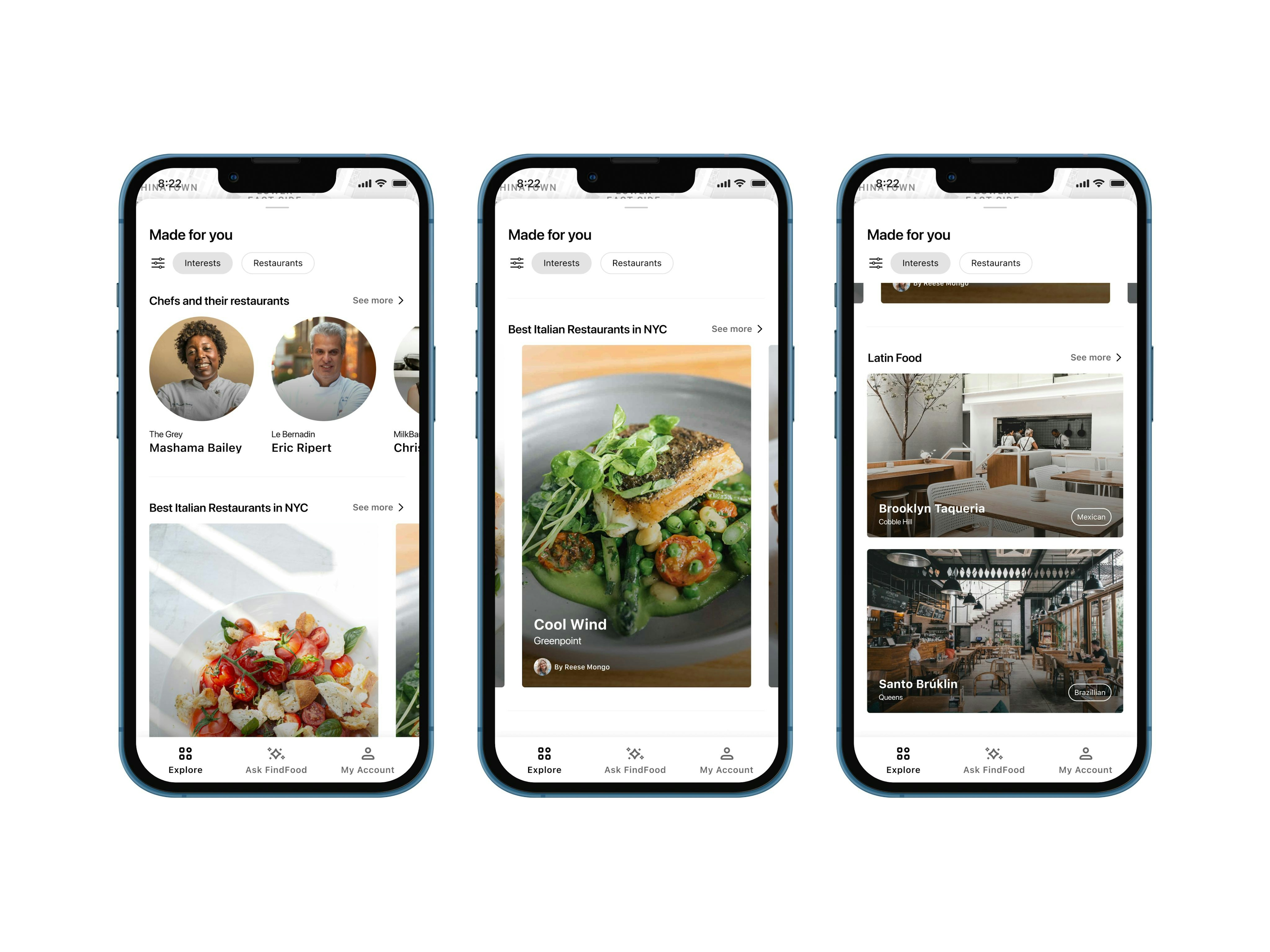
Restaurants
The user will have access to a list of restaurants with default relevance by distance, which can be filtered according to their most relevant requirements (distance, price, reviews, etc.). When clicking on the pin on the map, the restaurant card automatically appears at the top of the list.
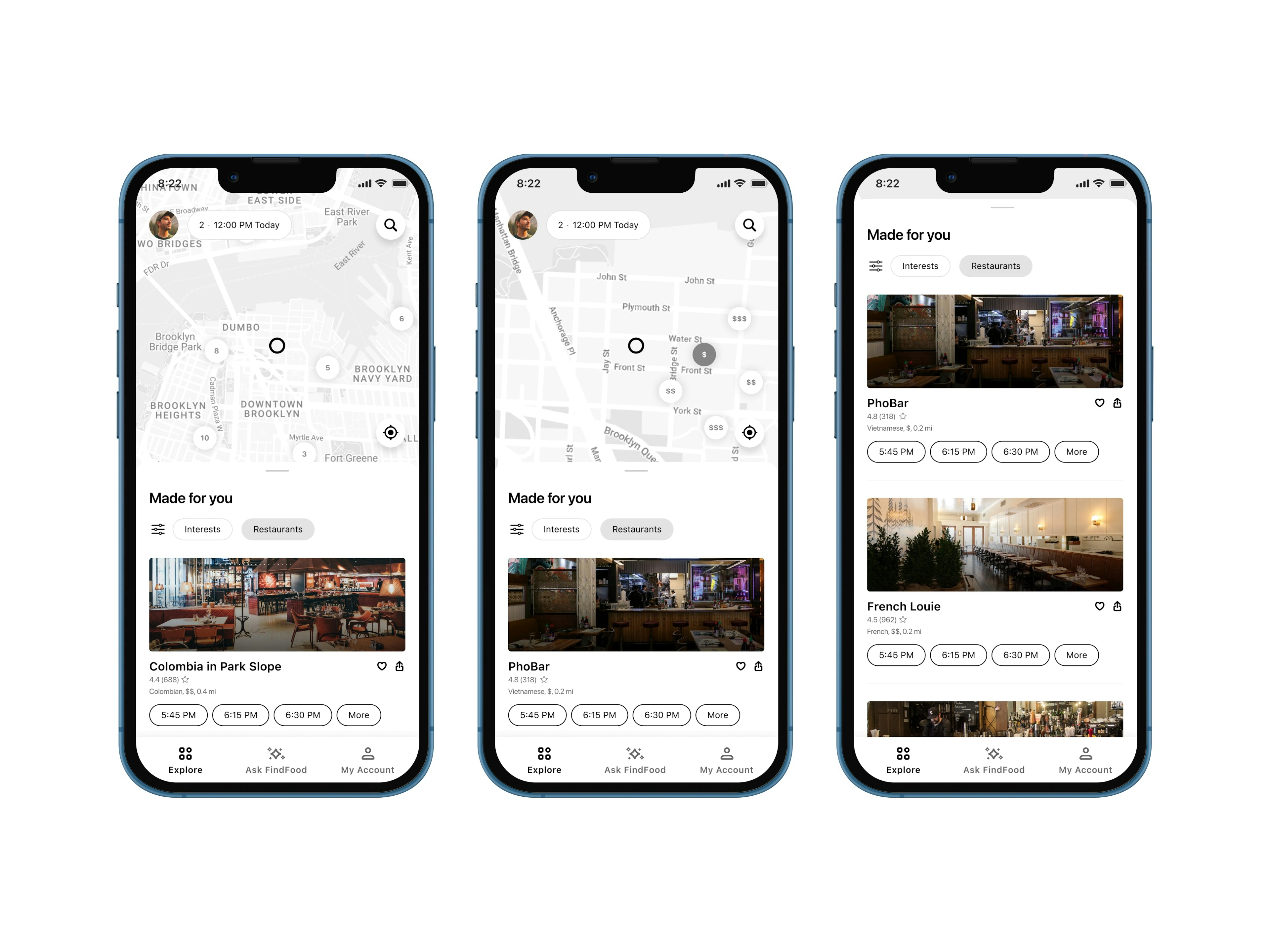
Ask FindFood
By offering personalized real-time assistance, Ask FindFood AI generates tailored recommendations for places and events that align with their specific search requirements.
“...Sometimes, however, the choice can be overwhelming… my partner and I will just scroll around and look at a ton of stuff and debate options for thirty minutes, and then it’s basically too late to go out. I’ve definitely had a couple unexpected grocery store frozen dinners because of that!”
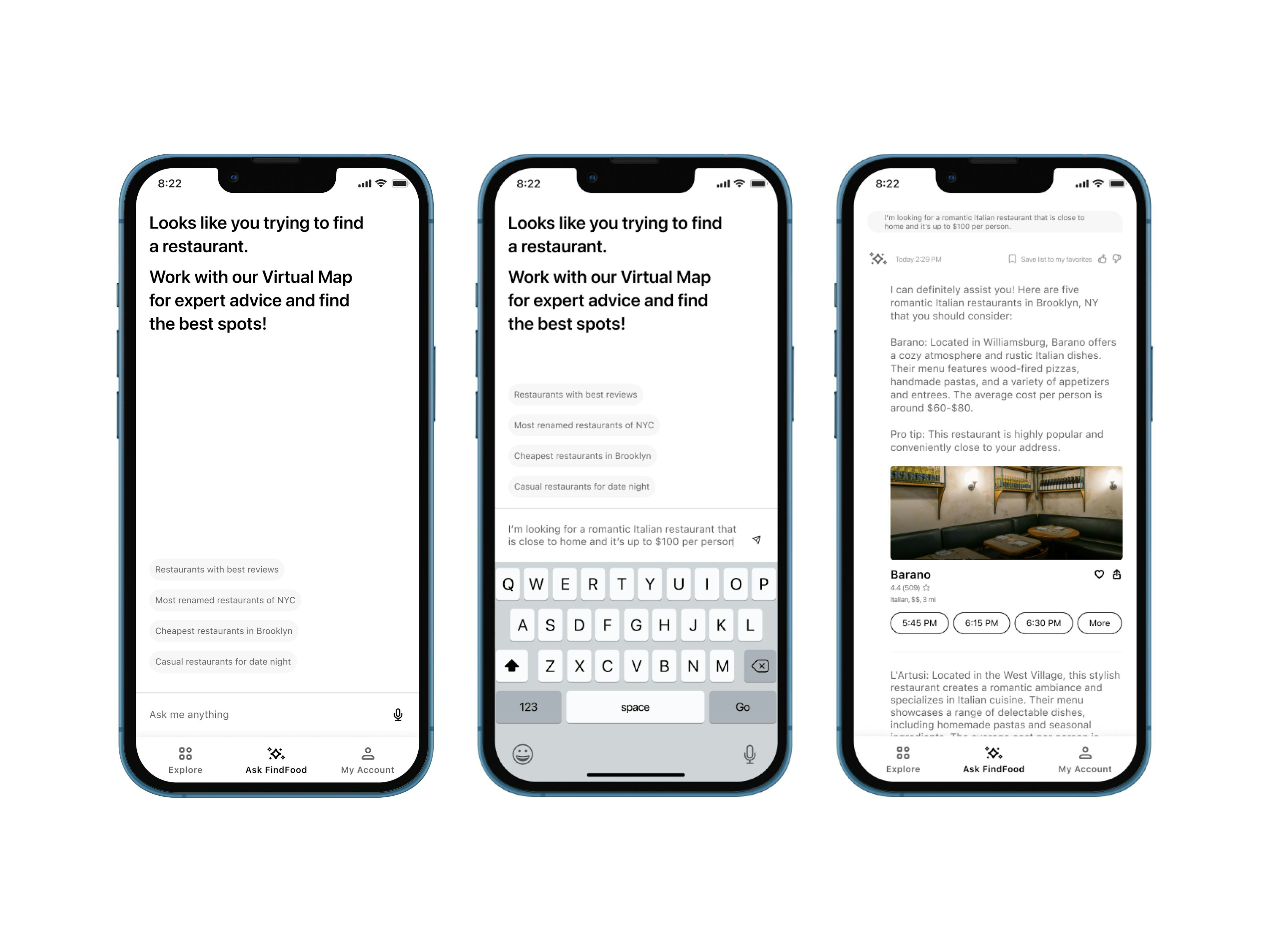
Restaurant page
The restaurant page features a visually appealing interface that provides information about the restaurant, emphasizing delivering an engaging visual experience and showcasing customer reviews.
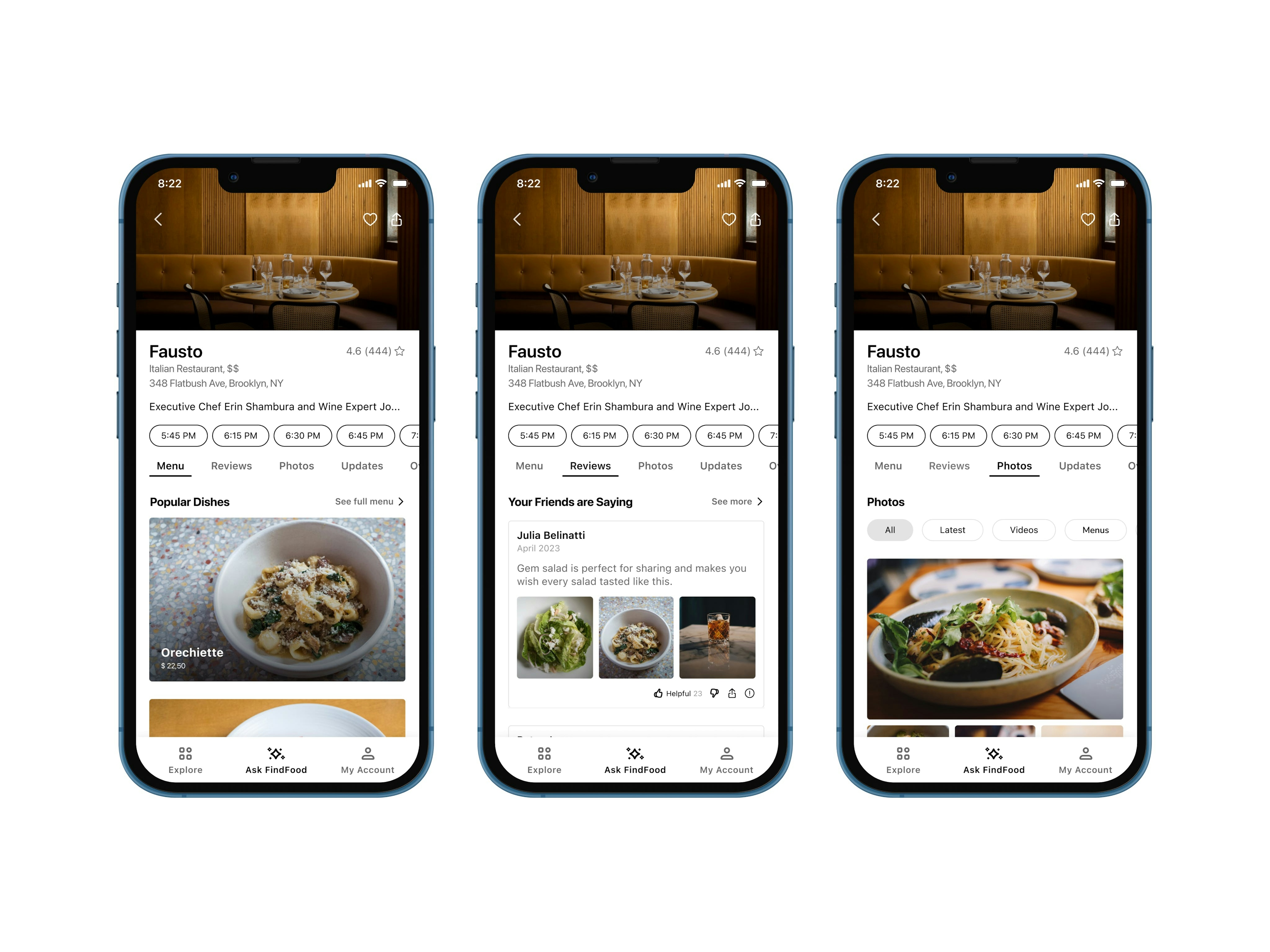
My Account
My account provides quick access to all actions performed by the user within the App, such as represented by the tab menu.
Tab Menu
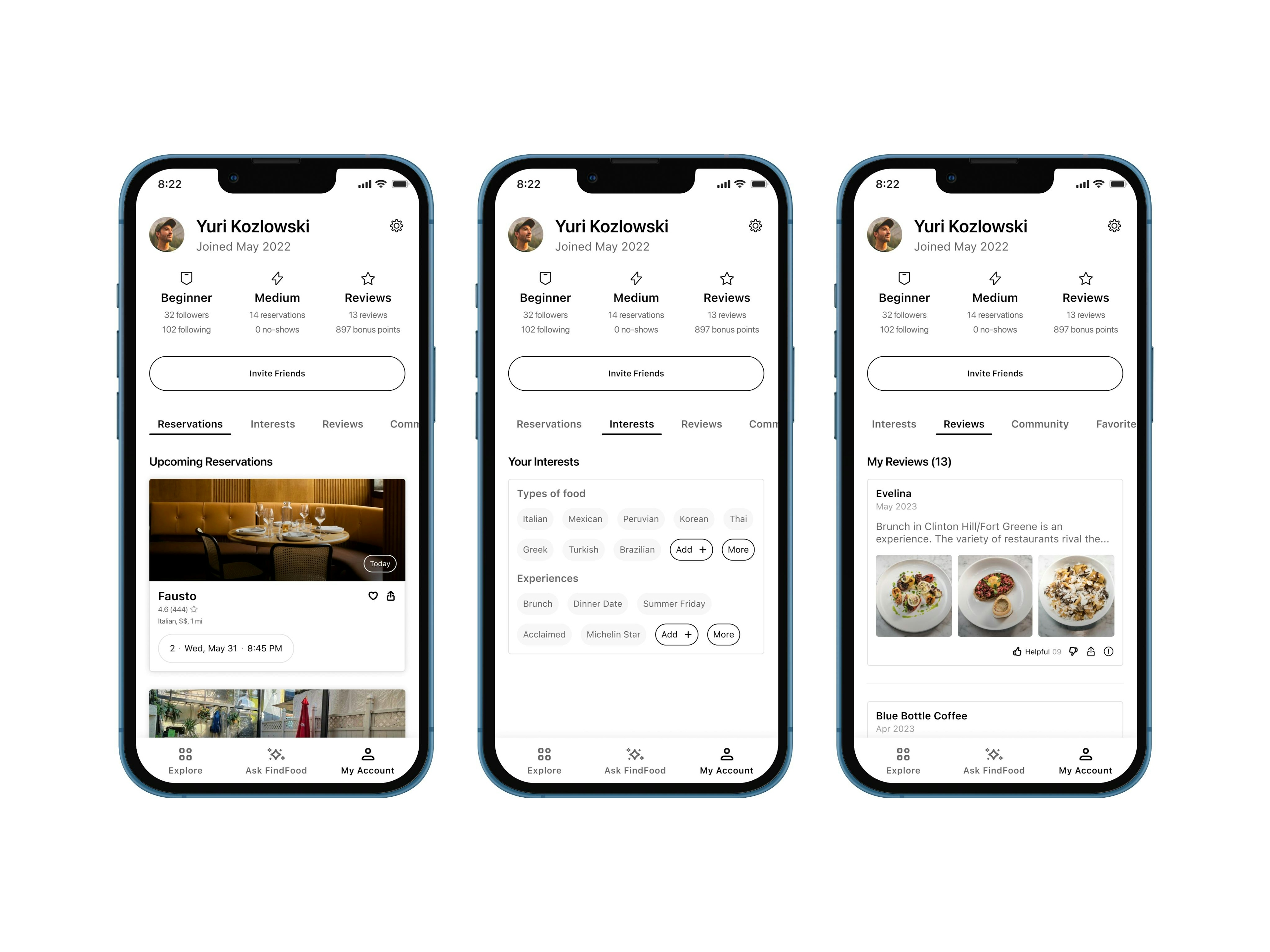
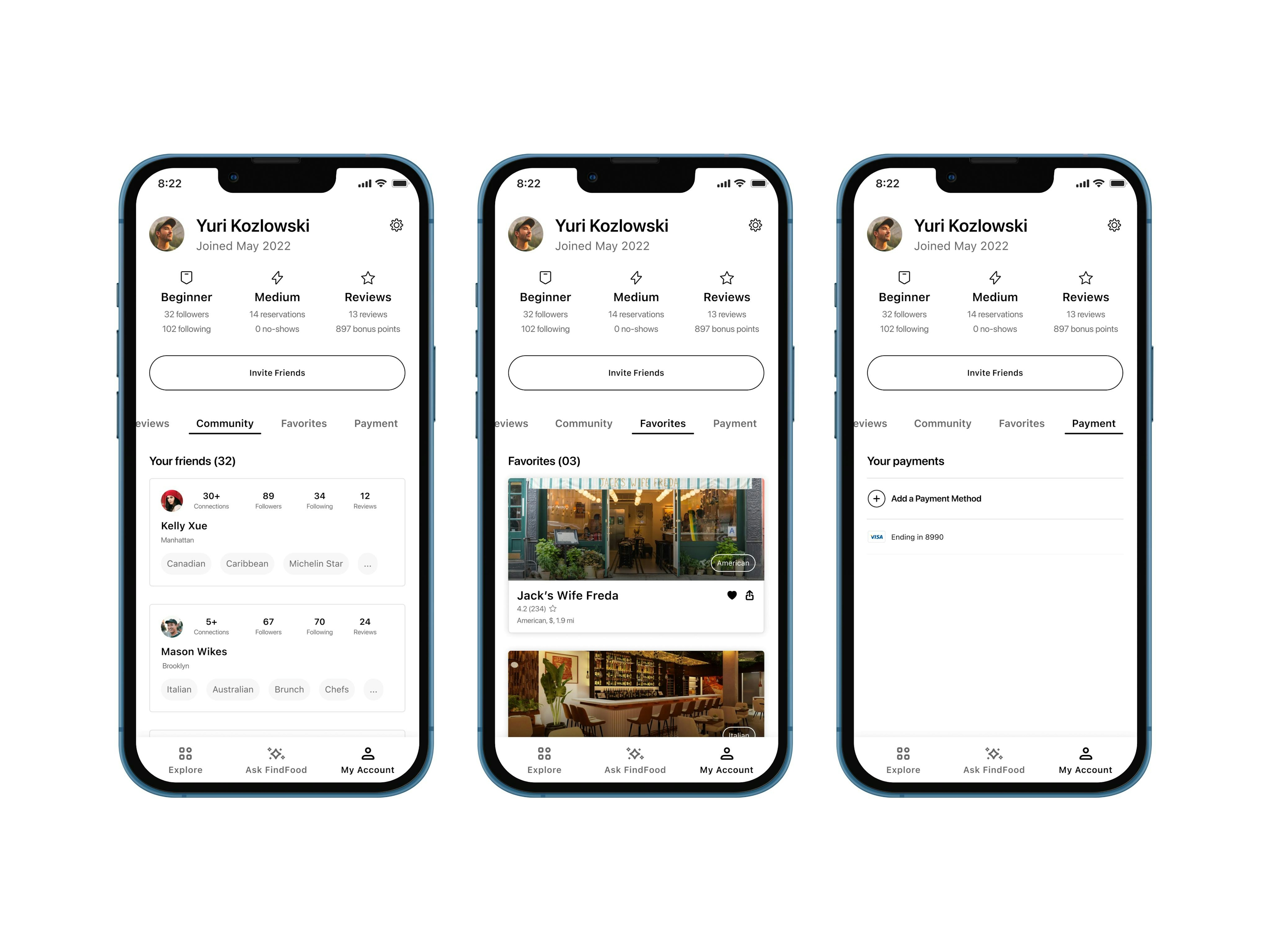
Rewards
Bonus points
Encouraging user engagement with rewards enhances the platform experience and incentivizes active participation.
Bonus points accumulate through reservations, appearances (no "no-shows"), and experience reviews. Upon reaching specific milestones, users unlock exciting rewards, including dinners valued up to $100 or discounts of 50% on their next reservation.
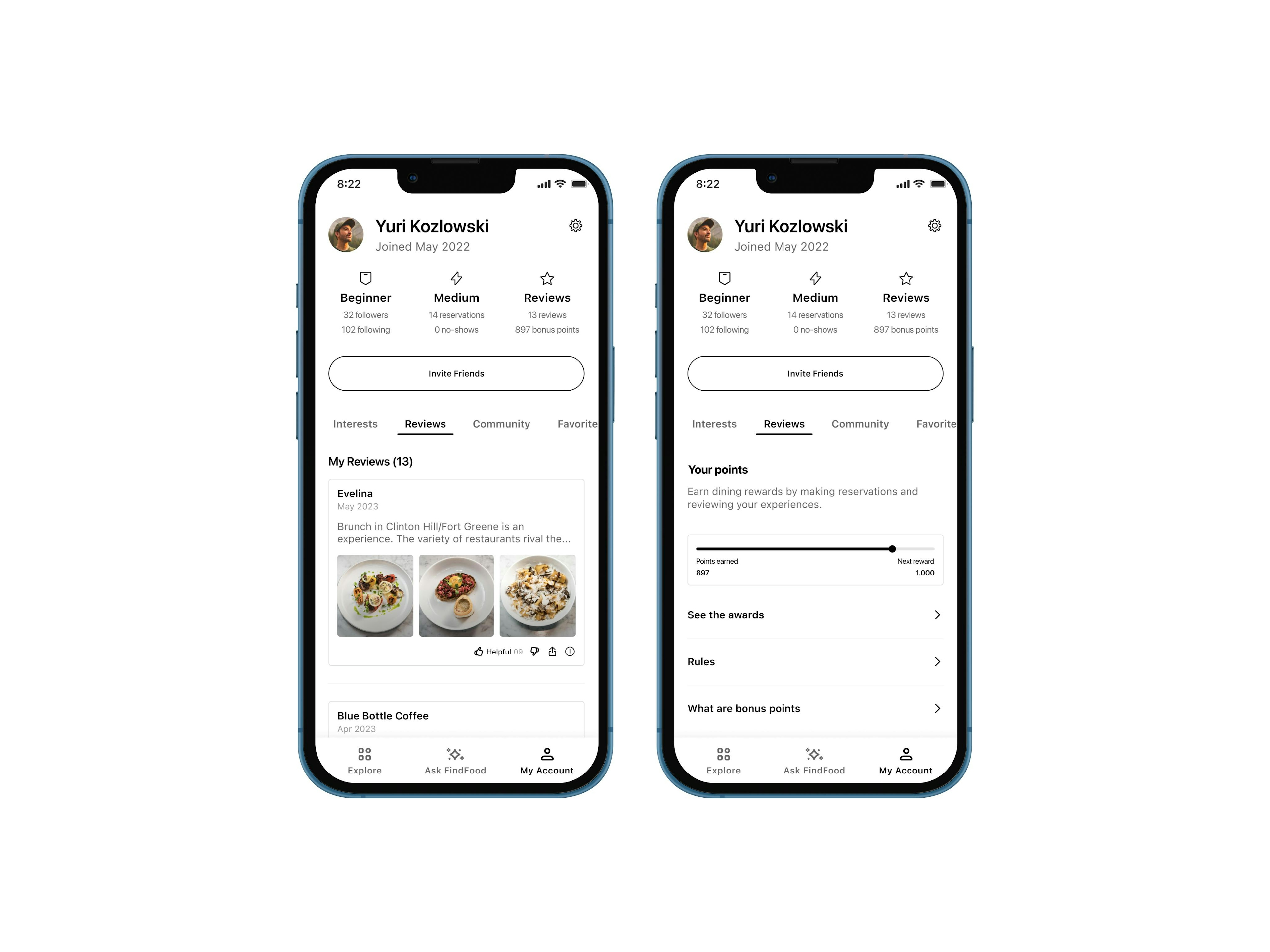
How would I measure results
- Time to Goal - Have the business goal in mind and understand if the user who visits the app has a goal in mind. If the business is set up properly, these two goals should be similar, if not the exact same.
- Discovery Method - Understand if the search methods we chose are working and being useful for users.
- Success / Failure Rate - Ignoring the time it might take, are users successfully completing a task or a goal?
- Return / Repetition Rate - How often are users returning to the app and repeating the tasks? Must be combined with time to goal metric.
- Getting the data - Using tools like Hotjar to track and visualize data using semi-intuitive filters.
- UX-Focused NPS - Get answers to questions like “How likely are you to recommend the search experience on your iPhone app?”